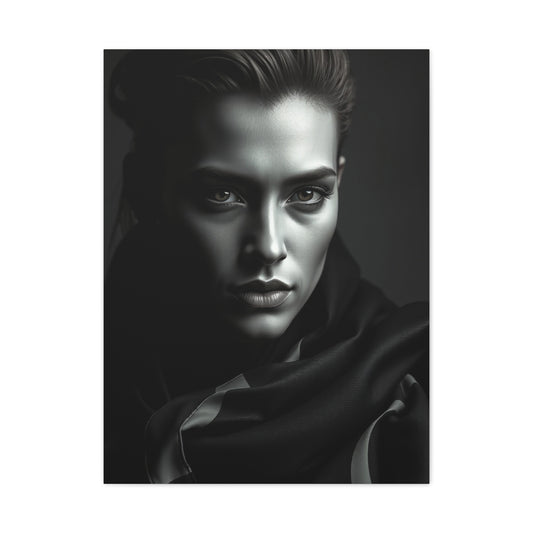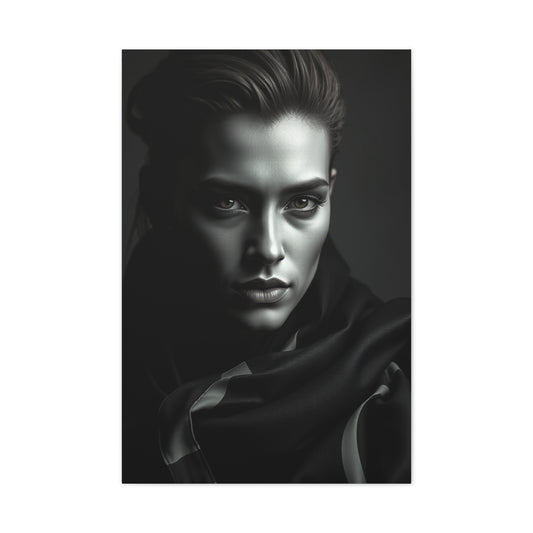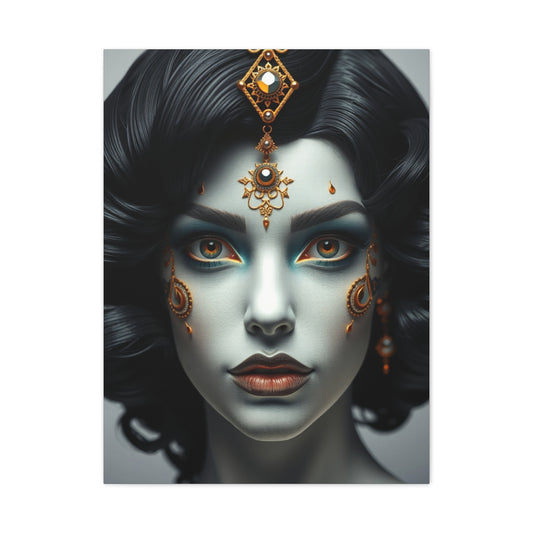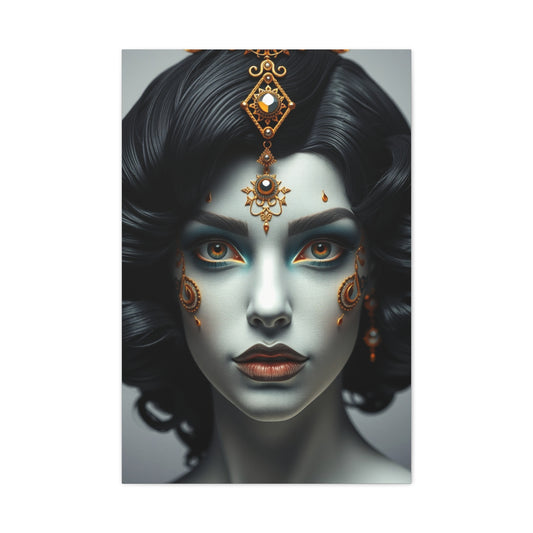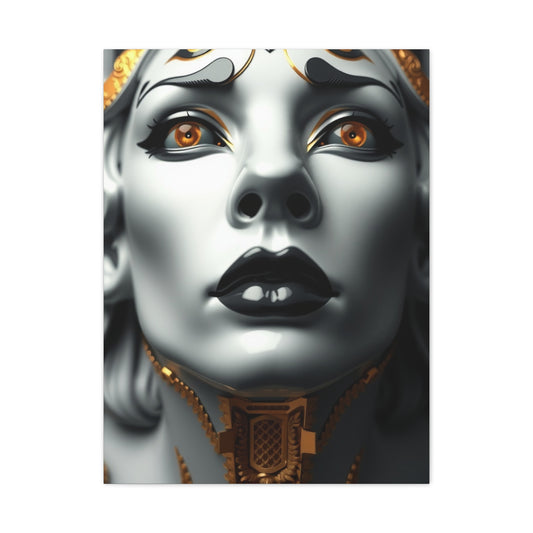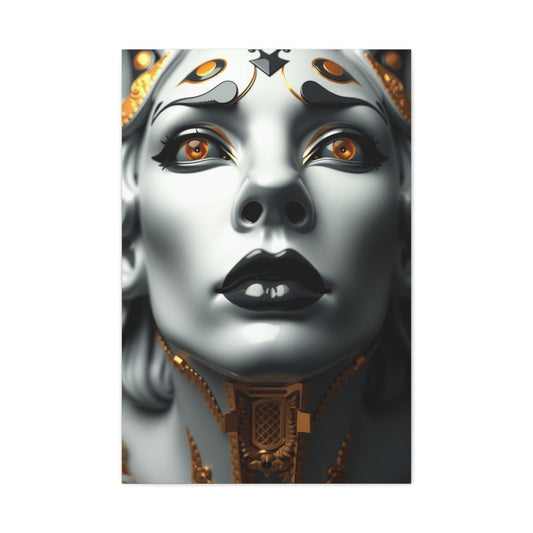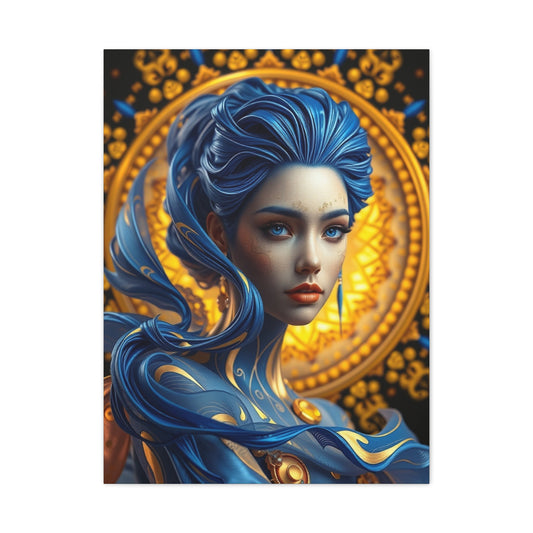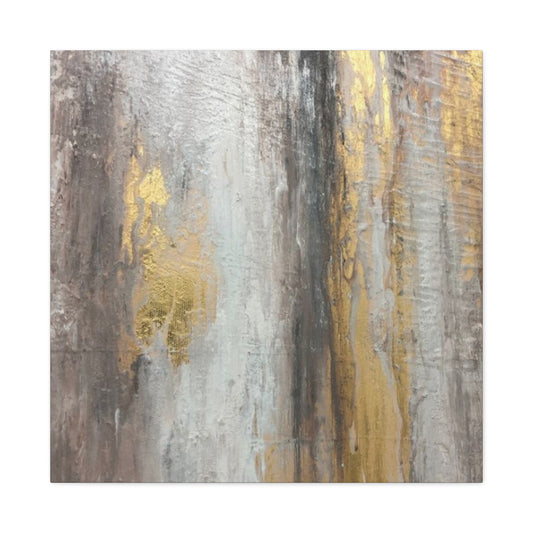A powder room is more than a functional space; it’s an opportunity to showcase personality and style. Thoughtfully selected wall art transforms this compact area into a curated sanctuary that delights the senses. From color palettes and textures to shapes and materials, exploring unique designs allows homeowners to create a powder room that is both visually striking and intimately personal.
Playful and Whimsical Powder Room Wall Decor
The powder room is often an overlooked area in the home, but it presents a unique opportunity to inject personality and charm. Adding playful wall art to this intimate space can transform it from merely functional to a delightful sanctuary. Fun and whimsical prints, ranging from abstract animals to imaginative patterns, can provide visual interest and create a mood that encourages relaxation and enjoyment. Compact spaces particularly benefit from small, eye-catching pieces that draw attention and add character.
Selecting art with a touch of humor or an unexpected element can make your powder room feel vibrant and engaging. Illustrations of charming creatures, stylized motifs, or surrealist compositions can enliven the atmosphere without overpowering the overall design. Consider playful interactions between color and form—perhaps a mischievous cat in muted pastel tones or a geometric bird rendered in contrasting hues. Even a minimalist line drawing can become a conversation piece when thoughtfully placed.
|
Related Catagories: |
Integrating Playful Art into Powder Room Design
Incorporating whimsical wall art requires balancing creativity with cohesion. Begin by observing the existing color scheme and textures in your powder room. Artwork that complements or contrasts the walls, fixtures, and finishes can enhance visual harmony. For instance, a soft blush pink wall may benefit from prints in teal, gold, or ivory to create a dynamic, playful contrast. Light-hearted art can also work well with unexpected materials, such as acrylic panels, metallic accents, or canvas with a textured finish.
Another approach is to use wall art to introduce a theme that resonates with your personality. Themes such as flora and fauna, abstract doodles, or fantastical landscapes can evoke specific moods. For example, botanical illustrations paired with sculptural wall hooks or hanging planters can create an immersive, almost ethereal environment. Layering art with small decorative objects adds dimension and prevents the space from feeling flat.
Choosing the Right Size and Scale
Scale is crucial in a compact powder room. Oversized prints can overwhelm a small wall, while tiny pieces risk being unnoticed. The goal is to occupy about 60 to 75 percent of the available wall space, leaving room for other elements like mirrors, shelves, or lighting fixtures. Multi-panel prints offer flexibility by dividing a large visual into manageable segments that can be arranged creatively. This method allows you to cover more space without the bulkiness of a single large canvas.
Consider unconventional shapes to add interest. Hexagonal, circular, or asymmetrical canvases can break the monotony of rectangular walls and introduce a modern, avant-garde sensibility. A small gallery wall composed of varying shapes and sizes can amplify the sense of playfulness while maintaining visual cohesion.
Color Palettes for Whimsical Powder Rooms
Colors play a pivotal role in enhancing playful energy. Bright, saturated hues can energize the space, while muted pastels create a dreamy, whimsical atmosphere. Using a combination of both ensures the environment is lively without feeling chaotic. Consider layering tones to create depth, such as pairing soft lavender with rich emerald or blending aqua with blush pink accents. Metallic hints in gold, copper, or silver can elevate playful art to a luxurious level without compromising the fun aspect.
When selecting colors, consider their psychological impact. Vibrant yellows and oranges evoke optimism and energy, while cool blues and greens suggest tranquility and rejuvenation. Subtle pops of unexpected color can make the artwork more intriguing and memorable, engaging visitors in a sensory experience beyond the visual.
Typography and Lighthearted Quotes
Typography offers a versatile approach to playful wall art. Text-based artwork can be cheeky, inspiring, or humorous, injecting personality into the powder room. Consider oversized lettering, hand-drawn calligraphy, or whimsical fonts that complement the surrounding decor. A witty phrase or a short poetic line can serve as a focal point while enhancing the room’s character.
Placement matters when using typography. Hanging a singular oversized canvas with a striking word or phrase creates a statement piece, while smaller prints in a gallery arrangement provide balance and rhythm. Typography combined with playful illustrations can merge visual interest with conceptual depth, resulting in an artwork that is both aesthetically pleasing and emotionally engaging.
Materials and Finishes
The choice of materials and finishes can amplify the playful nature of wall art. Canvas prints with a textured surface can add depth, while acrylic panels provide a sleek, modern sheen. Consider mixed media, combining wood, metal, or fabric elements to introduce a tactile component. This approach creates a multisensory experience that extends beyond color and imagery.
Unframed canvases lend a contemporary, carefree feel, emphasizing the artwork itself rather than its borders. Framed pieces, however, offer a polished presentation that can contrast beautifully with playful motifs, creating a dynamic tension between sophistication and whimsy. Experimenting with reflective surfaces like metallic foils or glossy inks can add sparkle and vibrancy, particularly effective in smaller powder rooms where light is limited.
Creating Visual Flow
When decorating a compact powder room, establishing visual flow is essential. Arrange wall art to guide the eye naturally across the space. Central pieces can anchor the design, while secondary prints complement and reinforce the theme. Avoid overcrowding; each artwork should have breathing room to maintain clarity and focus.
Vertical arrangements can elongate walls, making the room feel taller, whereas horizontal layouts expand perception of width. Curating artwork with a sense of rhythm—alternating size, color, or subject matter—maintains energy without overwhelming the senses. Playful patterns interspersed with calming visuals can create a balanced, dynamic composition that delights without distraction.
Combining Art with Accessories
Integrating art with accessories elevates the playful aesthetic. Complement prints with sculptural hooks, decorative mirrors, or small shelves displaying whimsical objects. Functional yet decorative items such as colorful towel racks or quirky soap dispensers can reinforce the theme. Consider incorporating fragrant candles, small plants, or textured textiles to enrich the sensory experience.
The layering of art and accessories allows for seasonal or mood-based adjustments. Rotating prints or switching accent items offers flexibility and keeps the powder room engaging. Personal touches, such as a favorite collectible or hand-crafted object, further enhance intimacy and charm.
Lighting for Playful Art
Proper lighting highlights the playful aspects of your powder room wall art. Ambient lighting ensures even illumination, while accent lights like spotlights or wall-mounted sconces draw attention to focal pieces. Colored LED accents can enhance specific tones in the artwork, creating a dynamic visual environment.
Natural light, when available, should be considered in selecting colors and materials. Glossy or reflective surfaces can maximize daylight, while matte textures reduce glare. Layering light sources creates a versatile atmosphere, transitioning seamlessly from functional to whimsical moods depending on the time of day.
Final Considerations
Playful wall art in a powder room is more than decoration; it establishes mood, expresses personality, and transforms a utilitarian space into a sanctuary. Careful attention to scale, color, materials, and arrangement ensures the artwork complements rather than competes with other elements. By integrating whimsical prints, typography, and tactile finishes, the powder room becomes an environment that delights every visitor while reflecting your individuality.
The key is balance—embracing fun and imagination while maintaining visual harmony. Even in small spaces, thoughtful selection and placement of playful artwork can leave a lasting impression, making your powder room not only functional but an expressive and enjoyable retreat.
Personalizing Your Powder Room
A powder room is one of the most intimate spaces in a home, making personalization essential. Beyond functional utility, it should be a reflection of taste, mood, and personality. Personalization transforms a standard bathroom into a curated sanctuary where every detail is intentional. From selecting meaningful artwork to arranging decorative objects and scented elements, a personalized powder room offers an immersive sensory experience.
Personalization begins with understanding how you want the space to feel. Whether serene, whimsical, modern, or eclectic, the artwork and decor should communicate that vision. The use of unique prints, tailored arrangements, and bespoke designs ensures that your powder room stands apart from conventional decor.
Curated Wall Art as a Personal Statement
Wall art is the cornerstone of personalization. Instead of choosing generic prints, select pieces that resonate with personal experiences or passions. Abstract forms, landscapes reminiscent of favorite places, or custom illustrations can evoke emotional resonance and enhance comfort. The artwork should create a sense of belonging, as though the space exists specifically for you.
Mixing styles is also a hallmark of personalized decor. Combining vintage-inspired prints with modern minimalist canvases can create contrast and intrigue. Layered arrangements allow multiple pieces to complement one another, encouraging exploration and engagement each time you enter the room.
Incorporating Scent and Sound
Sensory experiences elevate personalization. Scented candles, diffusers, or subtle room sprays enhance mood and create an inviting ambiance. Selecting scents that align with your personality, such as vanilla for warmth or eucalyptus for freshness, can make your powder room a retreat for relaxation.
Sound is another often-overlooked dimension. A compact speaker discreetly integrated into shelves or cabinetry allows for soft music, nature sounds, or ambient tones. Soundscapes can harmonize with the visual elements, enriching the overall sensory experience and making routine activities like handwashing or grooming more enjoyable.
Functional Accessories with Style
Personalized powder rooms balance aesthetic and functionality. Accessories such as trays for perfumes, sculptural soap dispensers, and artfully arranged hand towels can enhance both utility and visual appeal. Consider incorporating items with unique textures, colors, or finishes that align with the overall decor theme.
Functional objects, when curated thoughtfully, double as decorative statements. A carved wooden bowl for hand towels, a metallic tray for beauty products, or an intricately patterned mirror frame can elevate ordinary elements into artful focal points.
Layering Textures and Materials
Texture contributes significantly to personalization. Mixing smooth, glossy surfaces with tactile fabrics or woven materials adds depth and character. Consider wall art printed on textured canvas, metallic frames, or wood panels. Accessories like plush mats, woven baskets, or sculpted soap dishes enhance tactile engagement and enrich the sensory environment.
Layering textures also adds visual interest without introducing excessive color or pattern. In compact spaces, varied materials prevent monotony while maintaining harmony, ensuring the powder room feels dynamic yet coherent.
Choosing Meaningful Color Palettes
Color plays a vital role in expressing personality. While trends like monochrome or muted pastels provide elegance, personalized spaces can incorporate shades that evoke emotion or memory. Deep jewel tones suggest luxury and drama, while soft neutrals create serenity.
Personalized color schemes often emerge from favorite hues or those associated with positive experiences. Complementary accents in towels, wall art, and accessories can reinforce this palette, ensuring a cohesive yet distinctive space.
Seasonal and Rotating Displays
Personalization allows for adaptability. Rotating artwork, changing decorative objects, or updating color accents can reflect seasonal moods or personal growth. For example, winter might feature deeper tones and cozy textures, while summer brings bright, playful prints and lighter materials.
Rotating art displays also maintain novelty, preventing visual fatigue. Multi-panel prints or modular frames simplify the process, allowing for easy substitution and fresh compositions that keep the powder room vibrant and engaging.
Incorporating Family or Personal History
Powder rooms can also showcase personal or family narratives. Framed photographs, heirloom objects, or custom illustrations provide intimacy and emotional resonance. Integrating these elements into wall art arrangements or shelf displays ensures the space feels uniquely yours.
Combining personal artifacts with contemporary or abstract prints balances nostalgia with modernity. The juxtaposition creates layers of meaning, making every visit to the powder room an immersive, reflective experience.
Visual Hierarchy and Focal Points
Creating a sense of hierarchy enhances personalization. Determine a primary focal point, such as a statement wall print or oversized mirror, and arrange secondary elements to complement it. This approach ensures balance, preventing small spaces from feeling cluttered while allowing for expressive detail.
Visual hierarchy guides attention naturally, creating a sense of order amid diverse elements. Even when using eclectic or bold pieces, careful composition maintains clarity and elevates the aesthetic impact of the artwork and accessories.
Integrating Natural Elements
Nature-inspired elements enhance both personalization and relaxation. Fresh flowers, small potted plants, or dried arrangements introduce organic beauty and subtle fragrance. Natural textures, such as woven baskets, driftwood accents, or stone-based objects, further contribute to a sensory-rich environment.
Wall art can complement these natural elements, whether through botanical prints, landscapes, or abstract interpretations of organic forms. This integration blurs the boundary between decor and environment, fostering a space that feels alive and serene.
Functional Luxury and Everyday Elegance
Personalization in powder rooms is as much about experience as aesthetics. Luxury need not be extravagant; thoughtful selection of everyday items can elevate routine activities. High-quality towels, beautifully designed soap dispensers, and curated vanity trays enhance tactile enjoyment and visual pleasure.
Luxury also lies in the subtle details: a perfectly aligned multi-panel print, a custom-scented candle, or a sculptural object that doubles as functional decor. These choices emphasize intentionality, ensuring the powder room exudes refinement and personality simultaneously.
Balancing Minimalism and Expression
While personalization encourages expression, maintaining balance is essential. Overcrowding can overwhelm the senses and diminish elegance. Select a few key artworks and accessories that carry significance, and allow breathing room between elements to preserve clarity.
Minimalist backdrops combined with expressive accents achieve harmony, allowing personal statements to shine without compromising spatial coherence. Negative space becomes a deliberate design tool, emphasizing the artwork and decorative objects rather than competing with them.
Interactive and Tactile Features
Consider integrating interactive or tactile features to enhance personalization. Wall panels with textures that invite touch, small shelves with rotating decorative objects, or adjustable lighting that changes the mood provide an engaging, multisensory experience.
These features make the powder room feel dynamic and responsive, creating a sense of discovery each time the space is used. Tactile interaction enriches the environment and deepens the personal connection with the decor.
Enhancing Mood through Art Placement
Placement of wall art is crucial for achieving the desired atmosphere. Centerpieces should align with eye level and functional sightlines, while secondary pieces can occupy corners or above fixtures to maintain balance. Strategic placement ensures that art interacts harmoniously with mirrors, lighting, and hardware.
In compact powder rooms, art can even influence perception of space. Vertical arrangements elongate walls, while horizontal layouts expand width. Diagonal or staggered placements introduce movement and guide attention, enhancing both function and aesthetic pleasure.
Blending Traditional and Modern Elements
Personalization allows the blending of historical and contemporary influences. Antique-inspired prints, classical motifs, or heirloom objects can coexist with abstract modern canvases or bold typographic statements. This eclectic approach creates visual interest, reflecting both personal heritage and current tastes.
Careful attention to scale, color, and composition ensures cohesion despite stylistic diversity. Layering traditional and modern elements emphasizes the narrative quality of the space, making the powder room a curated reflection of identity and taste.
Sensory Integration in Small Spaces
Compact powder rooms can achieve heightened sensory engagement through deliberate design choices. Art, scent, texture, sound, and color converge to create an environment that stimulates and soothes simultaneously. By coordinating these elements, homeowners craft a multi-dimensional experience, transforming a utilitarian room into a personal sanctuary.
Thoughtful sensory integration also enhances memory and emotional response. A subtle fragrance associated with a favorite artwork, or a tactile accessory placed near a visually striking canvas, reinforces the connection between decor and personal experience.
Final Considerations on Personalization
A personalized powder room is more than decoration; it is an intimate extension of self. Every choice, from wall art to lighting, from color to scent, contributes to an environment that is uniquely engaging. The goal is to create a harmonious yet expressive space where art, accessories, and sensory experiences intersect.
By carefully selecting meaningful artwork, integrating tactile and olfactory elements, layering textures, and balancing function with aesthetic appeal, homeowners can transform a powder room into a sanctuary of personality, comfort, and sophistication. Personalization ensures that each visit to this compact space is an experience of reflection, delight, and visual pleasure.
Exploring Powder Room Wall Art Styles
Choosing the right style of wall art is central to creating a cohesive powder room. Different artistic approaches can dramatically influence the mood and perception of a space. Whether you prefer minimalist, abstract, geometric, or human figure-based designs, understanding the nuances of each style allows for thoughtful selection. Styles can convey elegance, energy, playfulness, or serenity, providing both functional and emotional benefits.
Powder rooms, due to their compact nature, lend themselves to experimentation with style. Even bold or unconventional designs can be integrated without overwhelming the space. Selecting a style involves considering personal taste, existing decor, and the desired emotional atmosphere.
Minimalist Wall Art
Minimalism thrives on simplicity and clean lines. Powder rooms benefit from minimalist designs because they make compact spaces feel organized and open. Minimalist prints often feature limited color palettes, simple geometric shapes, or subtle line work.
The advantage of minimalist art is its versatility. A single monochrome canvas can harmonize with diverse fixtures, tiles, and textures, while maintaining a sense of refinement. Minimalist prints also work well in multi-panel arrangements, allowing a small room to feel expansive and uncluttered.
Abstract and Fluid Designs
Abstract art emphasizes form, color, and emotion rather than literal representation. Fluid compositions, swirling lines, and irregular shapes inject dynamism and movement into powder rooms. This style encourages interpretation, making the space engaging and thought-provoking.
Abstract designs are particularly effective in balancing rigid architectural elements. Soft, flowing shapes juxtaposed against straight lines of cabinetry or mirrors create contrast and visual tension, enhancing the artistic appeal. Choosing abstract prints in calming tones can evoke tranquility, while vibrant hues energize the space.
Geometric and Pattern-Based Art
Geometric prints feature structured forms such as triangles, hexagons, diamonds, or interlocking patterns. These designs introduce order and rhythm, complementing modern or contemporary interiors. Repeating patterns in contrasting colors can make walls feel larger and add architectural interest without structural modification.
Pattern-based art, including tessellations or optical illusions, provides a playful twist on geometric principles. Small powder rooms can benefit from patterns that lead the eye across the wall, creating depth and enhancing spatial perception.
Human Figure and Figurative Art
Human figure or figurative artwork adds a personal, emotive element to powder rooms. Abstract interpretations of the body, line drawings, or stylized portraits can imbue spaces with personality and narrative depth. These pieces often convey subtle messages, from celebrating body positivity to highlighting elegance or strength.
Figurative art works well in combination with minimalist or abstract pieces. The juxtaposition of organic forms against geometric or fluid backgrounds creates visual intrigue and ensures that the powder room feels layered and thoughtfully curated.
Botanical and Nature-Inspired Prints
Botanical art introduces elements of nature, creating serenity and freshness. Illustrations of leaves, flowers, or trees provide a calming counterpoint to urban interiors. These prints are versatile, suiting both traditional and contemporary powder rooms.
Consider seasonal rotations with botanical prints—spring and summer can feature lively florals, while autumnal or winter-themed foliage creates warmth during colder months. Nature-inspired designs also pair beautifully with textured materials, such as woven baskets or wooden accents, reinforcing a sensory-rich environment.
Typography and Quote-Based Art
Typography-based prints remain popular in powder room decor. Whether humorous, inspirational, or poetic, text can serve as a focal point. Modern trends favor large-scale lettering or single statements, moving away from cluttered collections of small quotes.
Text can be combined with patterns, abstract shapes, or subtle illustrations, adding complexity without losing clarity. Typography allows for customization and personalization, reflecting individual values, humor, or aesthetic sensibilities.
Mixed-Media and Layered Art
Mixed-media art combines multiple materials or techniques within a single piece, producing depth and texture. Canvas may include acrylic, metal, or fabric overlays, creating visual and tactile interest. Layered art is particularly effective in powder rooms, where its intricate details can reward closer inspection in the intimate space.
Incorporating mixed-media pieces encourages experimentation with contrast—matte versus glossy finishes, smooth versus textured surfaces—enhancing the richness of the room’s decor. This style suits eclectic interiors or spaces aiming for high visual engagement.
Powder Room Wall Art Materials
The material of wall art influences both aesthetics and longevity. Selecting the appropriate medium ensures that the artwork complements the space while withstanding humidity and temperature fluctuations common in bathrooms.
Canvas
Canvas is a versatile, popular choice for powder room wall art. It offers texture, depth, and adaptability to various styles, from minimalist line work to abstract explosions of color. Canvas can be stretched over wooden frames, providing a three-dimensional effect, or left frameless for a modern, sleek look.
Its lightweight nature makes installation straightforward, and it can be paired with multi-panel arrangements for a dynamic presentation. Canvas prints also accept a variety of finishes, including matte, glossy, or metallic, expanding the design possibilities.
Wood and Plywood Panels
Wooden panels bring warmth and organic texture to powder rooms. Prints on wood often reveal subtle grain patterns, adding depth and interest. Natural wood tones contrast beautifully with sleek ceramics, tiles, and metals, softening the overall aesthetic.
Wood panels can be carved, painted, or printed directly, offering flexibility in style. They pair particularly well with botanical or nature-inspired art but can also support abstract or geometric designs, creating a tactile, visually appealing contrast.
Metal Art and Aluminum Prints
Metal prints, particularly aluminum, offer a contemporary, reflective quality. The smooth surface and metallic sheen enhance color vibrancy and detail, making them ideal for abstract or photographic pieces. Metal art is highly durable and resistant to moisture, making it suitable for powder rooms with higher humidity.
Aluminum prints can be mounted flush to the wall, emphasizing clean lines, or framed for added depth. The reflective surface interacts with lighting, creating dynamic visual effects that change throughout the day.
Acrylic and Glass Panels
Acrylic or glass-based artwork provides sleek, modern sophistication. Transparent or semi-transparent panels allow light to pass through, enhancing spatial perception in small rooms. Acrylic surfaces also intensify colors, providing crisp, vivid imagery that stands out against neutral backgrounds.
These materials pair well with minimalist or geometric designs, reinforcing contemporary aesthetics. Additionally, acrylic and glass prints are easy to clean, making them practical for spaces prone to splashes or humidity.
Textile and Fabric-Based Wall Hangings
Fabric art, including woven tapestries, embroidered pieces, or textile collages, introduces texture and softness. These materials absorb sound slightly, contributing to a more serene environment. Textile art can incorporate color, pattern, and dimensionality, offering a multisensory experience.
Fabric pieces work well with layered or mixed-media arrangements. They can be mounted on rods or frames, creating flexibility in display. In powder rooms, textiles add warmth and tactility, balancing harder surfaces like tiles and mirrors.
Mixed Materials and Composite Art
Combining materials, such as wood with metal, fabric with acrylic, or canvas with metallic leaf, allows for experimental, highly personalized wall decor. Composite art can feature relief, layering, or three-dimensional elements, making the powder room feel immersive.
Mixed materials also support modular arrangements, where individual components can be rearranged or rotated, providing evolving visual experiences. This approach encourages creative expression while maintaining functional adaptability in a small space.
Choosing the Right Material for Your Powder Room
Material selection should consider style, durability, and environmental conditions. Powder rooms often have high humidity, fluctuating temperatures, and occasional splashes, so moisture-resistant materials like metal, acrylic, or treated wood are preferable. Canvas and textiles are viable if the room is well-ventilated or if the prints are coated with protective finishes.
The scale and weight of materials also influence installation. Lightweight options like canvas or acrylic simplify mounting, whereas heavier wood or metal pieces may require reinforced anchors or special hardware. Choosing materials that align with both aesthetic goals and practical constraints ensures longevity and satisfaction.
Matching Material with Style
Material choice enhances stylistic expression. For instance, a minimalist powder room benefits from acrylic or aluminum prints, emphasizing clean lines and reflective surfaces. Abstract or mixed-media pieces thrive on canvas or wood panels, allowing texture and layering to enrich visual impact.
Nature-inspired or botanical designs gain depth when rendered on textured canvas, wood, or fabric, reinforcing the organic aesthetic. Typography and graphic art often excel on smooth, rigid surfaces like acrylic, metal, or stretched canvas, ensuring crisp edges and clarity.
Wall Art Shapes and Dimensions
Beyond style and material, shape and scale influence how artwork interacts with a powder room. Rectangular canvases are classic, providing structure and familiarity. Circular or oval panels introduce softness and movement, breaking the rigidity of square tiles or rectangular mirrors.
Multi-panel arrangements, including diptychs, triptychs, or larger modular grids, create a sense of continuity and rhythm. Irregular or geometric shapes, like hexagons, diamonds, or freeform cutouts, contribute a contemporary, avant-garde sensibility. Proper sizing ensures that the art occupies 60 to 75 percent of the available wall space, harmonizing with fixtures, mirrors, and architectural features.
Installation Considerations
Installation method depends on material, weight, and intended layout. Lightweight canvas or acrylic panels can be mounted with standard hooks, while heavier wood or metal may require anchors or reinforced hardware. Ensuring artwork is flush with the wall prevents gaps, which can disrupt visual flow.
Placement should consider line of sight and spatial dynamics. Centering pieces above vanities or aligning them with mirrors creates a sense of balance. Multi-panel arrangements require careful measurement and spacing to maintain cohesion and rhythm.
Harmonizing Materials and Accessories
The interplay between wall art materials and accessories enhances overall cohesion. Metallic art pairs well with brass or chrome fixtures, while wooden or fabric pieces complement woven baskets, natural stone, or ceramic elements. Layering materials creates depth, texture, and a tactile visual experience, contributing to a sense of luxury and sophistication.
Lighting interacts with materials, altering perception. Glossy surfaces reflect light, adding vibrancy and highlighting color, whereas matte or textured finishes provide subtlety and softness. Coordinating lighting with material properties maximizes impact and ensures the powder room feels curated and inviting.
Choosing the Perfect Colors for Powder Room Wall Art
Color sets the mood for any space, and powder rooms are no exception. The choice of wall art colors can dramatically influence perception, ambiance, and even emotional response. Selecting complementary hues that harmonize with tiles, fixtures, and accessories ensures a cohesive, visually appealing room.
Powder rooms are ideal for experimenting with bold or unconventional colors. Small spaces allow for accent colors, statement hues, or subtle gradients without overwhelming the eye. Neutral tones serve as a base, while vibrant accents draw attention to focal points such as mirrors, artwork, or vanities.
Understanding Color Psychology
Color psychology plays a crucial role in creating atmosphere. Soft blues and greens evoke calmness and tranquility, perfect for early mornings or late-night routines. Warm tones like terracotta, mustard, or coral introduce energy and optimism, stimulating mood in compact spaces.
Combining colors with complementary undertones ensures balance. For example, a muted gray wall paired with a vibrant turquoise canvas produces contrast without clashing. Layering shades of the same family, such as pastels or jewel tones, creates subtle depth and visual interest.
Integrating Metallics and Accents
Metallic finishes in wall art amplify color and dimension. Gold, silver, and copper highlights add sophistication and reflect light, enhancing the room’s overall brightness. Metallic accents work particularly well with bold colors, providing contrast and visual intrigue without overpowering the composition.
Reflective surfaces can interact with natural or artificial light, creating dynamic visual effects. For example, a brushed gold overlay on a deep navy print can shift in appearance depending on lighting, introducing a sense of movement and luxury.
Determining Ideal Wall Art Sizes
Size is paramount in powder rooms, where space is limited. Artwork should occupy approximately 60 to 75 percent of the available wall area, leaving breathing room for fixtures, mirrors, and accessories. Proper sizing ensures the artwork feels integrated rather than imposing.
Measure wall height and width before selecting art. Multiply the dimensions by 0.6 and 0.75 to determine the range of ideal canvas sizes. This method ensures proportionality, especially in rooms with asymmetrical or unconventional layouts.
Single Versus Multi-Panel Arrangements
Single large canvases provide immediate impact, anchoring the room with a bold focal point. They are ideal for minimalist or contemporary styles, where simplicity and clarity are essential.
Multi-panel arrangements offer flexibility and dimension. Diptychs, triptychs, and larger modular sets break a single composition into segments, allowing for creative spacing and alignment. These formats guide the eye across the room and create a dynamic visual narrative without occupying excessive wall area.
Exploring Shapes of Wall Art
Shape influences perception, mood, and spatial dynamics. Rectangular and square canvases provide structure and balance, complementing linear fixtures like mirrors and vanities. Circular and oval panels soften angular lines, introducing fluidity and visual interest.
Geometric shapes such as hexagons, diamonds, and triangles add contemporary flair. Irregular or freeform designs create an avant-garde atmosphere, ideal for eclectic or modern powder rooms. Combining shapes in a gallery arrangement produces layered depth and a sense of discovery.
Orientation and Placement
Orientation—horizontal versus vertical—affects the perceived dimensions of a powder room. Vertical canvases elongate walls, making the space appear taller. Horizontal pieces broaden perception, giving a sense of width and openness.
Placement should consider functional sightlines. Artwork above vanities, near mirrors, or along primary walking paths ensures visibility while enhancing the room’s visual rhythm. Centering pieces at eye level maintains balance, particularly in compact areas.
Layering Multiple Artworks
Layering creates dimension and intrigue. Arrange a central piece as the focal point, then layer smaller complementary prints around it. Variations in size, shape, and orientation maintain visual interest without cluttering the wall.
Consider integrating tactile or three-dimensional elements, such as framed metal accents or textured canvas. This approach adds depth and invites closer inspection, enriching the sensory experience of the powder room.
Harmonizing Colors, Sizes, and Shapes
Consistency among colors, sizes, and shapes ensures a cohesive aesthetic. Matching accent colors between wall art and accessories, such as towels or decorative objects, unifies the design. Proportional sizing and strategic placement create balance, preventing overcrowding in compact spaces.
Shapes should complement the architectural lines and fixture designs. For instance, circular wall art pairs beautifully with rounded mirrors or sinks, while geometric arrangements echo linear cabinetry and tiling. Coordinating these elements enhances harmony and visual flow.
Using Statement Colors
Statement colors add personality and flair. Bold hues, when used sparingly, can elevate a neutral powder room into an energizing and memorable space. Consider vibrant turquoise, deep coral, or rich emerald as accent choices in single or multi-panel canvases.
Statement colors can also interact with lighting, reflecting and refracting light to change the mood throughout the day. Pairing these bold tones with neutral bases ensures balance and prevents visual fatigue.
Combining Neutral and Bold Tones
Neutral backgrounds with accent colors create timeless elegance. Whites, grays, and soft taupes allow colorful artwork to shine, providing a canvas for visual experimentation. Layering muted tones with metallic or bright accents offers subtle sophistication, ideal for modern powder rooms.
Balancing warm and cool tones prevents the space from feeling too stark or overwhelming. Cool neutrals with warm accents, or vice versa, create harmony while maintaining an engaging environment.
Incorporating Texture Through Color
Texture amplifies the impact of color. Matte, glossy, metallic, and textured surfaces can modify how a hue is perceived, adding depth and interest. A smooth glossy finish enhances vibrancy, while a textured canvas softens bold colors, contributing to tactile appeal.
Layering different textures within a color scheme enriches the sensory experience, making the powder room feel dynamic and thoughtfully curated.
|
Related Catagories: |
Exploring Gradient and Ombre Effects
Gradient or ombre effects introduce subtle visual movement. Transitioning tones in a single artwork—from light to dark or across complementary shades—can create depth and dimension. This technique works well in narrow or tall powder rooms, adding a sense of elongation and fluidity.
Gradients can also harmonize with other design elements, such as wall finishes, lighting, or textiles, ensuring cohesion and enhancing overall aesthetic appeal.
Color Coordination with Fixtures
Coordination with fixtures ensures cohesion between wall art and the room’s functional elements. Metallic hardware, mirrors, and faucets should complement or contrast with art colors thoughtfully. Warm metallics pair with rich tones, while chrome or silver harmonizes with cooler palettes.
Proper coordination ensures a balanced, polished look. Art does not exist in isolation; it should interact seamlessly with the surrounding environment to elevate the overall design.
Interactive and Modular Arrangements
Modular arrangements allow flexibility in color, size, and shape. Panels can be rearranged seasonally, rotated for variety, or swapped to reflect mood changes. This adaptability keeps the powder room fresh and engaging without requiring permanent alterations.
Interactive layouts also encourage experimentation with color combinations and orientation, fostering a playful yet sophisticated approach to wall decor.
Final Considerations on Colors, Sizes, and Shapes
Successful powder room wall art integrates color, size, and shape harmoniously. Thoughtful selection enhances spatial perception, defines mood, and expresses personality. Bold statements, layered arrangements, and complementary tones elevate the small space, ensuring both functionality and aesthetic appeal.
By considering the interplay of color psychology, proportion, orientation, and texture, homeowners can curate powder rooms that feel expansive, dynamic, and visually stimulating. Colors, sizes, and shapes are not mere decorative choices—they are fundamental tools for creating memorable, immersive, and personalized wall art experiences.
Expert Advice on Powder Room Wall Art
Decorating a powder room with wall art requires a blend of creativity, practical planning, and design insight. Experts emphasize the importance of scale, balance, and cohesion to transform a small space into a polished, inviting retreat. Thoughtful selection and placement of artwork can elevate the room from purely functional to visually stimulating.
Professional guidance often highlights the interplay between color, texture, lighting, and material. Understanding these factors ensures that each piece contributes harmoniously to the overall aesthetic, enhancing both style and spatial perception.
Choosing the Right Focal Point
A powder room benefits from a central focal point. Experts recommend selecting a single statement piece that anchors the space. Oversized canvases, striking typography, or bold abstract prints work well for this purpose.
Focal points should complement the room’s fixtures, mirrors, and cabinetry. The goal is to draw attention naturally while maintaining balance. A well-chosen focal piece creates a sense of intentionality, signaling that the powder room is a curated environment rather than a utilitarian space.
Incorporating Gallery Walls
Gallery walls are an effective strategy to add depth and personality. Curating a collection of complementary pieces allows homeowners to experiment with different shapes, materials, and sizes. Professionals recommend maintaining consistent spacing and alignment to avoid visual chaos.
A compact gallery can feature a mix of abstracts, typography, and botanical prints. Layered arrangements invite exploration and make the powder room feel dynamic. Experts suggest incorporating tactile or three-dimensional elements to further enhance engagement.
Balancing Function and Aesthetic
Small powder rooms require careful consideration of functionality. Wall art should not impede storage, mirrors, or accessibility. Experts advise measuring available wall space and ensuring that artwork occupies 60 to 75 percent of the area.
Choosing lightweight materials, such as canvas or acrylic, simplifies installation and reduces risk in humid environments. Heavier pieces may require reinforced anchors or professional mounting to ensure durability and safety.
Coordinating with Fixtures and Finishes
Wall art should harmonize with existing fixtures and finishes. Metallic frames can echo brass, gold, or chrome faucets, while wooden panels complement cabinetry or shelving. Professionals emphasize that this coordination creates cohesion and prevents the room from feeling fragmented.
The interaction between reflective and matte surfaces also affects visual perception. Glossy materials amplify light and highlight color, whereas matte finishes provide subtlety and softness. Expert placement ensures that lighting enhances the artwork’s impact while complementing the overall design.
Integrating Lighting
Lighting is critical in showcasing powder room wall art. Accent lighting, such as sconces or recessed LEDs, highlights textures, colors, and details. Adjustable lighting allows homeowners to change ambiance according to time of day or desired mood.
Natural light should be considered when selecting colors and finishes. Matte surfaces reduce glare, while reflective materials amplify daylight. Layered lighting—ambient, task, and accent—ensures that artwork remains prominent and visually striking at all times.
Emphasizing Personal Style
Experts emphasize personalization as a core principle. The powder room should reflect the homeowner’s tastes, experiences, and personality. Custom prints, commissioned artwork, or curated collections allow for meaningful expression in a compact space.
Personalized art elevates the powder room beyond decoration. Incorporating sentimental elements, such as family illustrations, travel-inspired pieces, or favorite motifs, fosters emotional connection and transforms the room into a private sanctuary.
Selecting Appropriate Materials
Material choice is crucial for longevity and style. Canvas, wood, metal, acrylic, and textiles each offer distinct advantages. Canvas provides texture and adaptability, wood introduces warmth and organic texture, while metal and acrylic offer durability and modern sophistication.
Experts recommend moisture-resistant finishes in powder rooms due to humidity. Properly sealed canvas or coated wooden panels prevent warping, while metal and acrylic remain unaffected by splashes. Material selection should balance aesthetics, practicality, and installation feasibility.
Considering Scale and Proportion
Proper scaling ensures that artwork complements rather than overwhelms a small powder room. Oversized prints may dominate the space, whereas pieces that are too small can appear lost. Professionals suggest measuring wall dimensions and selecting art proportionally.
Multi-panel arrangements offer flexibility in scaling. Diptychs, triptychs, and modular sets divide larger compositions into manageable segments. This approach maintains visual interest and allows experimentation with placement without compromising balance.
Combining Shapes and Formats
Mixing shapes and formats enhances visual intrigue. Rectangular, square, circular, and irregular shapes can coexist to create rhythm and movement. Experts advise combining consistent color palettes or thematic elements to maintain cohesion amidst variety.
Layering different formats, such as combining a large central canvas with smaller side panels, adds dimension. Unframed pieces complement framed works, providing contrast between polished and minimalist aesthetics.
Harmonizing Colors
Color coordination is vital for a harmonious powder room. Experts recommend balancing neutrals with accent hues, creating contrast without overwhelming the senses. Soft, muted bases with vibrant focal pieces provide visual interest and elegance.
Consider the psychological effects of color. Cool tones like turquoise, soft blues, and greens evoke calmness, while warm tones like coral, gold, or amber energize the space. Layering complementary or analogous shades can enhance depth and sophistication.
Incorporating Texture
Texture adds tactile and visual depth. Canvas, wood, fabric, or metal surfaces introduce variation and interest. Experts advise layering textures in combination with colors to enhance engagement and create a sensory-rich environment.
Textured artwork complements accessories such as woven baskets, plush mats, or sculptural objects. Proper layering ensures the space feels dynamic without overcrowding, reinforcing the curated atmosphere of the powder room.
Enhancing Spatial Perception
Art can manipulate the perception of space. Vertical panels elongate walls, making ceilings feel higher, while horizontal pieces widen the room. Diagonal or staggered arrangements create movement and guide the eye, expanding the apparent dimensions of compact powder rooms.
Strategically placed mirrors alongside artwork further amplify perception. Reflective surfaces multiply visual depth and interact with color, light, and texture, creating a more immersive environment.
Seasonal and Rotating Displays
Experts encourage seasonal rotation of artwork. Swapping prints to reflect seasonal colors, textures, or motifs keeps the powder room visually fresh. Multi-panel systems or modular frames simplify this process, allowing homeowners to experiment with arrangements without permanent alterations.
Seasonal updates also allow exploration of mood shifts. Cool winter tones, spring florals, summer brights, and autumnal hues can transform the room’s emotional resonance, enhancing personal enjoyment.
Integrating Scent and Accessories
Enhancing the powder room experience extends beyond visual art. Coordinating scented candles, diffusers, and decorative accessories with wall art creates a multisensory environment. Matching accent colors in towels, mats, or vases with artwork reinforces cohesion.
Experts suggest a minimalist approach to accessories, focusing on quality over quantity. Functional items can double as decor, such as sculptural trays, elegantly designed soap dispensers, or aesthetic storage solutions.
Combining Modern and Traditional Elements
Mixing modern and traditional artwork introduces depth and narrative. Abstract prints, contemporary typography, or metallic finishes can coexist with vintage-inspired or hand-crafted pieces. Professionals emphasize maintaining consistent themes, color schemes, or material relationships to prevent discord.
This blend reflects personality and curatorial intent, showcasing both heritage and contemporary taste. The result is a powder room that is visually layered, meaningful, and stylistically engaging.
Maintaining Proportion with Furniture
Even in small spaces, furniture and wall art should be proportionate. Vanities, shelves, and cabinetry provide context for artwork. Experts recommend aligning art with the top or center of key fixtures to create balance and visual continuity.
Oversized pieces can dominate compact furnishings, while smaller prints may appear insignificant. Proper proportion ensures that each element enhances the overall composition and maintains functional usability.
Expert Tips for Lasting Impact
Professionals recommend several strategies for achieving enduring style in powder room wall art:
-
Invest in quality materials to prevent deterioration from humidity.
-
Prioritize simplicity in smaller spaces to avoid overcrowding.
-
Layer color, texture, and shape for depth and visual interest.
-
Coordinate lighting with art to maximize impact.
-
Include personal elements to create emotional resonance.
-
Rotate or update displays periodically to maintain freshness.
These strategies balance aesthetics with practical considerations, ensuring the powder room remains both beautiful and functional.
Encouraging Exploration and Experimentation
Experts advocate experimentation as a cornerstone of powder room design. Small spaces allow for bold choices in color, shape, and material that might feel overwhelming elsewhere. Testing different orientations, layering techniques, or interactive elements fosters creativity and ensures the space is uniquely yours.
Experimentation also extends to multi-sensory integration. Combining tactile finishes, scented elements, and visually dynamic arrangements enhances engagement and transforms daily routines into enjoyable rituals.
Final Considerations for Enhancing Interiors
A well-curated powder room with thoughtful wall art transforms the space into a sophisticated, sensory-rich environment. Expert guidance emphasizes scale, proportion, cohesion, personalization, and adaptability.
The interplay of color, material, texture, lighting, and placement ensures that each artwork contributes meaningfully to the room’s atmosphere. Following professional advice allows homeowners to create a powder room that is visually captivating, functionally efficient, and deeply personal, elevating everyday moments into curated experiences.
Conclusion
Powder room wall art has the power to elevate even the smallest spaces, turning routine environments into curated retreats. By carefully considering color, scale, material, shape, and placement, homeowners can craft a space that reflects their personality and enhances daily experiences. Incorporating textures, metallics, or mixed-media pieces adds dimension and tactile interest, while multi-panel arrangements and creative orientations bring dynamism and visual rhythm. Personalization, whether through meaningful prints, botanical inspiration, or typography, ensures the room feels intimate and unique. Attention to lighting, proportionality, and sensory details like scent further enrich the ambiance. Expert advice highlights the importance of balance, cohesion, and thoughtful curation, ensuring that each element contributes purposefully to the overall aesthetic. When combined thoughtfully, wall art transforms a powder room from a purely functional area into a visually captivating, sophisticated, and inviting sanctuary where design meets personal expression.













